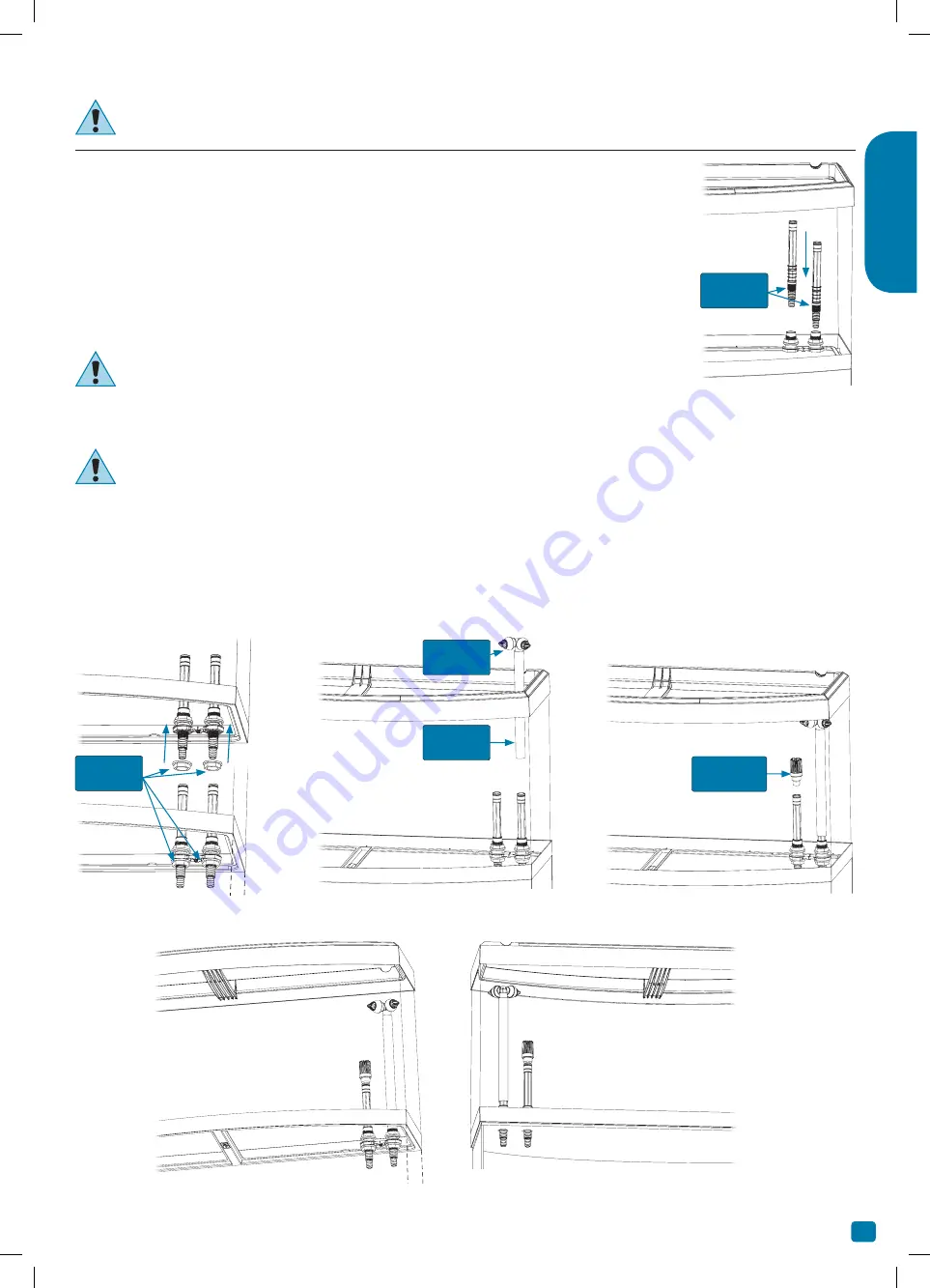
EN
GLISH
9
7. The output nozzles (N) can be easily rotated to divert the water flow where desired.
Direct water jets so as not to let water overflow from the tank. Avoid directing the water jets against the
LED Strip Light(s).
Intake system installation
1. Manually unscrew plug (P) and remove plug (Q) from opening (I) (Pict. 1).
Important: keep plugs (P) and (Q) for any future use.
2. Slip the second connector stem (A) fully through opening (I) until it stops (Pict. 2).
3. Open the cabinet. Screw and tighten the nut ring (R) onto the bottom end of the
second stem (A) (Pict. 3).
4. Insert the intake strainer (S) onto connector stem (A) (Pict. 5). The assembly end
result is shown on Pict. 6 and Pict. 7.
The height of the intake strainer is high enough to suit the most standard
aquarium decorations. When decorating the aquarium, ensure it remains at
least 5 cm from the gravel bottom at all times to prevent it from sucking gravel
or sand and ensure that no decorations block the passage of water. Ornaments and rocks should be
positioned while the aquarium is still dry.
CAUTION!
: Never force Connector Stems (A) sideways, as this may damage the output/intake systems
and the glass tank. If in the event a different filtration system is used, which does not require the Intake/
Output systems supplied with this unit (e.g. an internal filter), restore the initial conditions by removing
the 2 connector stems (A) and closing openings (O) and (I) with plugs (P) and (Q). Plug (Q) ensures a
watertight seal and has to be inserted into its seat by pressing it. Plug (P) is designed to protect plug
(Q) and ensure that plug (Q) remains in its seat properly. Screw plug (P) by hand only until it will go
without forcing it.
DO NOT USE ANY TOOLS, AS DOING SO MAY DAMAGE THE UNIT
.
Pict. 2
Connector
Stem (A)
Ring Nut
(R)
Pict. 3
Pict. 4
Output
Nozzle (N)
Output
Stem (B)
Pict. 5
Intake
Strainer (S)
Pict. 6
Pict. 7






























